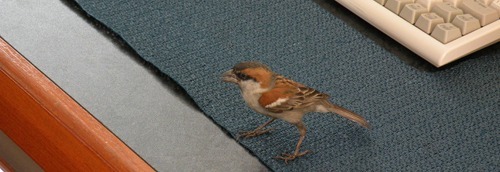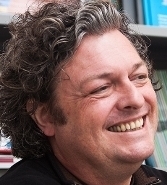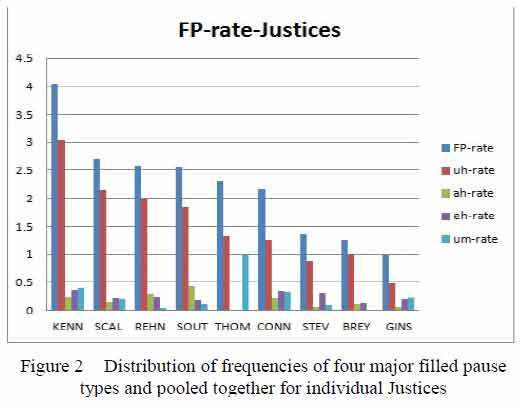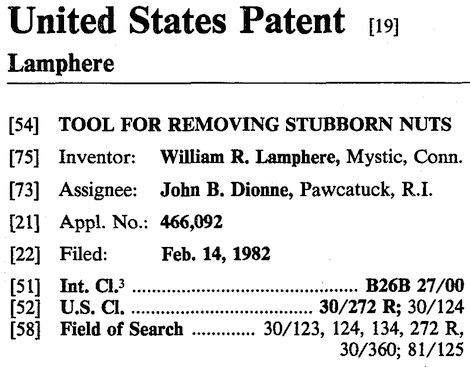Marc Abrahams's Blog, page 491
May 21, 2013
Just the facts, man… The persistence of misconceptions
Derek Muller writes (and explains in more detail than I’m presenting here): “It is a common view that ‘if only someone could break this down and explain it clearly enough, more people would understand.’ However it is debatable whether clear, concise explanations really work…. People have existing ideas about real world phenomena before they encounter scientific explanations.” Muller gives this example. Australians were asked “How long does it take the earth to go around the sun?” This video shows some of their opinions:
(HT Jennifer Ouellette)
Some years ago, at Harvard’s commencement, graduating students were asked to explain what causes the seasons. This video shows some of their explanations:
RELATED (in a slightly twisty, yet direct way): Some people are mistaken about mistakes
BONUS [lengthy, and only tangentially related]: Sgt. Joe Friday, famous for the (if not his) suggestion “Just the facts, ma’am”, engages in tenacious pursuit of some facts:
BONUS: “How to humble a wing nut” [HT Jess Zimmerman]

May 20, 2013
A homosexual copulation, on first arrival in The Netherlands from the Cape Verde Islands
 May 19th, 2013 was an historical moment in the history of European ornithology. Four Iago Sparrows (Passer iagoensis) arrived in The Netherlands from the Cape Verde Islands aboard a ship, named Plancius. They are the first know individuals of that species (endemic to the islands off West Africa) to have reached Europe. As the ship accommodated birdwatchers on their ‘Atlantic Odyssey’, the voyage of the sparrows is well documented. Eleven came aboard while the Plancius anchored off Raso Island on May 6th. Seven left the ship on Madeira Island, the remaining four, two pairs, continued their voyage to The Netherlands. They arrived safely.
May 19th, 2013 was an historical moment in the history of European ornithology. Four Iago Sparrows (Passer iagoensis) arrived in The Netherlands from the Cape Verde Islands aboard a ship, named Plancius. They are the first know individuals of that species (endemic to the islands off West Africa) to have reached Europe. As the ship accommodated birdwatchers on their ‘Atlantic Odyssey’, the voyage of the sparrows is well documented. Eleven came aboard while the Plancius anchored off Raso Island on May 6th. Seven left the ship on Madeira Island, the remaining four, two pairs, continued their voyage to The Netherlands. They arrived safely.
As a sparrow enthusiast, I was among the first ornithologists to welcome the Iago Sparrows in Europe, in the late afternoon of May 19th, 2013. Although the Plancius was docked in the harbor of Hansweert, and new land was open for colonization, the sparrows remained on deck, enjoying breadcrumbs. One male (pictured above) still resided in the vessel — on the bridge, where he had become friends with the captain.
All four sparrows were timid and passive, up until the moment I released the male from his confinement on the bridge. The other male then sought the company of the Captain’s sparrow, and the two cocks started a fight on the middle deck. I observed this behavior from close quarters.
The aggressive display ended in a clear attempt to copulate. Although I could not observe direct cloacal contact, one male definitely mounted the other and tried to copulate. The male that was mounted did, however, not assume the classic submissive solicitation posture (crouched, neck drawn in, wings slightly drooped), a posture known from observation of female House Sparrows (Passer domesticus) that solicit copulation. Here are pictures that document this remarkable behavior.


It is striking that ‘The first case of a homosexual copulation attempt in the Iago Sparrow’ — a matter of interest to the scientific community — was observed upon first arrival of these birds in The Netherlands.
BONUS: What should happen with the Iago Sparrows in The Netherlands? [in Dutch]

Filled pauses at the Supreme Court
Following our Improbable article on ‘Laughter at the Supreme Court‘, we turn now to the implications of ‘Filled Pauses’ at the same institution. A Filled Pause (FP) can be uhm, ah, uh, &etc. The questions are: how often do they crop up, and which of the court’s Justices make the most use of them? And, perhaps more importantly, is there a relation between the number of uhms (&etc) and the final decision of the Justice in the case?
These questions have been answered in a report from researchers at Constantine the Philosopher University in Nitra, Slovakia, in association with The Institute of Informatics, Slovak Academy of Sciences, Bratislava, Slovakia and with support from the Department of Computer Science at Columbia University, US. The team examined recorded audio data from the 2001 sessions of the US Supreme Court. A chart was produced (above) which graphically displayed the uh-rate, the ah-rate, the eh-rate the um-rate (and the total Filled Pause rate) for each of nine Justices during their conversations with lawyers. (As can be seen, Justice Kennedy had the highest FP score, and Justice Ginsburg the lowest). But did the FP content affect the outcomes of the case?
“ [the] mean difference between adjacent filled pauses was smaller in those Justice-lawyer pairs in which the Justice gave a favorable vote than in those pairs in which the Justice gave a non-favorable vote.”
Perhaps future work may provide explanations for the found effect?
See :
‘Entrainment in spontaneous speech: the case of filled pauses in Supreme Court hearings’ Proceedings of the 3rd IEEE Conference on Cognitive Infocommunications 2012.
Also don’t miss : ‘The many meaning(s) of “Uh(m)”s‘

May 19, 2013
Group laughter at the social insect conference
“At a social insect conference, the whole room broke into laughter,” writes Myrmecos about the moment someone displayed this chart:
Myrmecos explains: “Pachycondyla, among the most common ants in tropical regions worldwide, turns out to be a motley assortment of unrelated species. While the taxonomy of the world’s 12,000 or so ant species is obviously still a work on progress, I don’t think any of us had seen a case where ant names showed such a non-relationship to their genealogy. We knew before that Pachycondyla wasn’t really a natural group. But this? This was bad…. [here for further details]“

May 18, 2013
A Tool for Removing Stubborn Nuts
Society needs a tool for removing stubborn nuts. And thanks to William R. Lamphere, society has one. Here’s the patent:
“Tool for Removing Stubborn Nuts,” William R. Lamphere, US patent #4446622, issued May 8, 1984.

First Reported Case of Laugh-Induced Seizure
This medical case report shows an exception to the old saying that “laughter is the best medicine”:
“Laugh-Induced Seizure: A Case Report,” Naba Raj Mainali, Leena Jalota, Madan Aryal, Torrey R Schmidt, Madan Badal, Richard Alweis [pictured here smiling but not laughing], Journal of Medical Case Reports, 2013, 7:123. The authors, at Reading Health System in West Reading, Pennsylvania, Robert Wood Johnson University Hospital in New Brunswick, New Jersey, and Jefferson Medical College in Philadelphia, report:
“A laugh-induced seizure is an unrecognized condition and to the best of our knowledge no case has been reported in the medical literature until now…. A 43-year-old obese, Caucasian man with a past history of insomnia, bipolar disorder and chronic headache presented with multiple episodes of seizures; all were induced by laughter. He had had several mild seizures in the month prior to admission, induced by laughter when he was watching comedy shows on the television. Each episode lasted approximately five to 10 seconds. In each instance, he started laughing, then his arms started shaking and he felt like ‘his consciousness was being vacuumed away’… He had had a variable number of seizure episodes; five times a day on average, based upon the length and intensity of the comedy shows.”
BONUS [probably unrelated]: Laughter at the Supreme Court

May 17, 2013
Gambling: Plato + Socratic etymology of her riddle’s answer
This study explains gambling in a way no other study has managed:
“Souls/Soles of Signs — Tell Totems and the Sphinx Wager,” Darryl A. Smith, University of Nevada, Las Vegas, Center for Gaming Research Occasional Paper Series #13, January 2012. The paper identifies its author in these words: “Darryl A. Smith, M.Div., Ph.D., is an Assistant Professor of Religious Studies at Pomona College and Affiliate of the Intercollegiate Department of Africa.”
The paper begins with this summary of itself:
“ABSTRACT: This paper develops a philosophy of play through an analysis of the foot wager of the Sphinx. Applying a construction of the cosmology of Plato along with a Socratic etymology of her riddle’s answer, it provides a reading of Sphingian contestation consistent with contemporary practices of deception found in modern games like poker. I argue that such deception is constitutive of the excessive illumination of signaling tells in games and that such excess, in turn, is indicative in allied political contexts of a covetous and acquisitive obsession with light. This theory makes use also of Ralph Ellison’s refiguring of Oedipal play as a theory of tyranny and serves as a riposte to the psychoanalytic idea of the Oedipus complex.”

Laughs at the Supreme Court
The groundwork for research into the occurrence of laughter at the US Supreme Court was initially provided by Professor Jay D. Wexler (of Buffalo University) in his 2005 article for Green Bag (second series, Volume 9, number 1) entitled : “Laugh Track”. The professor had made the decision to quantify the laughter content because :
“In the 2004–2005 term [...] for the first time, the Court Reporter started revealing the names of the speaking Justices. Because the Court Reporter also indicates, with the notation ‘(Laughter),’ when the courtroom has reached a certain level of mirth, it is now possible to determine how many times during the term any particular Justice’s comments induced a substantial amount of laughter.”
The professor searched the records and kept track of the number of times that each Justice caused ‘hoots and snickers’ to erupt in the courtroom. He then calculated each Justice’s ‘Laughter Episodes Instigated Per Argument Average’ (LEIPAA), representing the total number of laughter episodes instigated over the term divided by the number of oral arguments attended over the course of the term. The data revealed the following results :
“Justice Scalia won the competition by a landslide, instigating 77 laughing episodes, while Justice Thomas instigated zero laughing episodes, putting him all alone in last place among the Justices.”
A year on, the Supreme Court Laughter Research Project was considerably extended by Jason Wojciechowski, in his paper for the Social Science Research Network : [Laughter.] on the Supreme Court: Expanding on Professor Wexler’s ‘Laugh Track’
“Rather than merely counting the number of laughs the various justices elicited from the gallery at the Court, I have also tallied the number of times those justices spoke up in oral argument overall, so that we can see, on a per-comment basis, who is actually funniest.”
The results :
“Justice Scalia is again the winner of the Court’s stand-up (sit-down?) comedy competition, averaging a laugh every 27.6 comments. Chief Justice Rehnquist and Justice Breyer are bunched at the top with Scalia, averaging 38.6 and 31.8 comments per laugh, respectively.”
BONUS: An example joke from the records, from Justice Kennedy
“Recently I lost my luggage. I had to go to the lost and found at the airline, and the lady said has my plane landed yet.” (“Laughter”)
COMING SOON : ‘Uhming and erring’ at the Supreme Court.
[Many thanks to Mr. Wojciechowski for clarifications regarding his paper]

May 16, 2013
Anatomy lesson: “man caught with crack in buttocks”
The beginning of a news report on the Wicked Local web site, in Massachusetts:
In Framingham, man caught with crack in buttocksBy Norman Miller/Daily News staff
The MetroWest Daily News
Posted May 16, 2013 @ 12:01 AM
FRAMINGHAM — A Dorchester man who sold drugs hid a plastic bag full of crack cocaine in his buttocks on Tuesday, a prosecutor said Wednesday in Framingham District Court [pictured here].
Police arrested Dekara Anderson, 38, at 8:45 p.m. after a foot chase and being shocked twice with a Taser, prosecutor James Kerr said during Anderson’s arraignment….
(HT Adam K Olsen)
BONUS: Dekara Anderson wants you to be his pen pal

24/7 Lectures: A thoughtful Battle in The Netherlands 28/5
 On May 28, 2013, in Raamsteeg2, Leiden, The Netherlands, six prominent Dutch scientists will present their field of research by giving a complete technical description, in Dutch, in twenty-four (24) seconds, followed by a clear summary that anyone can understand, in seven (7) Dutch words. The best of these 24/7 speakers will be invited to present a 24/7 Lecture at the Nederlandse Ig Nobel Night, September 14th, 2013.
On May 28, 2013, in Raamsteeg2, Leiden, The Netherlands, six prominent Dutch scientists will present their field of research by giving a complete technical description, in Dutch, in twenty-four (24) seconds, followed by a clear summary that anyone can understand, in seven (7) Dutch words. The best of these 24/7 speakers will be invited to present a 24/7 Lecture at the Nederlandse Ig Nobel Night, September 14th, 2013.
The contestants of the Ig Nobel 24/7 Battle (and their topics) are:
Prof. dr. Louise Vet (Nioo), topic: ‘ecologie’
Prof. dr. Menno Schilthuizen (Naturalis): ‘geslachtsorganen’
Prof. dr. Joost Frenken (Universiteit Leiden): ‘wrijving’
Prof. dr. Maurits Berger (Universiteit Leiden): ‘Sharia’
Prof. dr. Frans Willem Korsten (Univ.Leiden): ‘literatuur-wetenschap’
Prof. dr. Henkjan Honing (Universiteit van Amsterdam) [pictured]: ‘maatgevoel’
The time and word limits will be enforced by referee Maarten Keulemans, science editor of De Volkskrant.
This form of communication — the 24/7 Lectures — was invented at the Ig Nobel Prize ceremony, and has long been a featured part of that annual event. At the Leiden event, our European Bureau Chief (and winner of the 2003 Ig Nobel Prize for biology) Kees Moeliker will explain the history of the 24/7 Lectures and of the Ig Nobel Prizes.
Where & when: Raamsteeg2, Raamsteeg 2, 2311 PL Leiden, the Netherlands; May 28, 2013, Tuesday, 8:00 pm (doors and bar open 7:30 pm).
Tickets: Euro 7,50 pay at the door (to reserve seats: mail raamsteeg2@gmail.com, and state ‘Ig Nobel 24/7 Battle’ + number of seats)



Marc Abrahams's Blog
- Marc Abrahams's profile
- 14 followers







